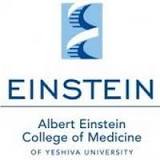Study of Left Ventricular Dyssynchrony in Heart Failure Patients
| Status: | Archived |
|---|---|
| Conditions: | Cardiology |
| Therapuetic Areas: | Cardiology / Vascular Diseases |
| Healthy: | No |
| Age Range: | Any |
| Updated: | 7/1/2011 |
| Start Date: | January 2007 |
Study of the Phenomenon of Dynamic Left Ventricular Dyssynchrony in Heart Failure Patients and Its Clinical Significance.
Heart failure has become one of the major epidemics of the modern era. Despite optimal
standard drug therapy, the prognosis of patients with heart failure remains poor. Patient
with Heart Failure are prone to have "dyssynchrony" which means that there are electrical
disturbances that cause the heart to pump blood in an inefficient way. Ventricular
dyssynchrony has been associated with increased mortality in patients with heart failure.
Based on these observations, techniques have been developed to correct dyssynchrony. The
investigators propose to investigate the change of dyssynchrony in relation to intravascular
volume status and exercise in heart failure patients. The investigators also propose to
examine dyssynchrony in the setting of acutely decompensated heart failure. The change in
dyssynchrony will be followed to examine if it translates into clinical significance.
Heart failure has become one of the major epidemics of the modern era. Despite optimal
standard drug therapy, the prognosis of patients with heart failure remains poor. It has
been noted that 15% of all HF patients and 30% of those with NYHA class III and IV HF have
intraventricular conduction delay, with a QRS duration >120 ms, most commonly manifested as
LBBB. These electrical disturbances result in LV dyssynchrony, seen as a paradoxical septal
wall motion activity, suboptimal ventricular filling and mitral regurgitation; thus further
compromising an already dysfunctioning left ventricle. Ventricular dyssynchrony has been
associated with increased mortality in patients with heart failure.
Based on these observations, techniques have been developed to correct dyssynchrony. Cardiac
resynchronization therapy (CRT) has been shown to improve subjective and objective
parameters in heart failure patients with QRS duration > 120msec. However, there is a group
of heart failure patients who did not respond to CRT. Also it has been noted that
approximately 30% of heart failure patients with QRS duration > 120 msec do not have actual
mechanical dyssynchrony by tissue doppler imaging. The electromechanical discrepancy of
ventricular dyssynchrony has been suggested as the possible explanation for the lack of
response. Also, there are heart failure patients with normal QRS duration who do have
mechanical dyssynchrony. These findings bring more emphasis to the importance of mechanical
dyssynchrony than electrical dyssynchrony, which is measured by QRS duration on surface EKG.
There are many different modalities to quantify mechanical dyssynchrony. The most commonly
used method is tissue doppler imaging (TDI). TDI measures the velocities of myocardial
tissue and time to maximal velocities. Then, these are used to describe contractions of
different wall segments. Strain and strain rates are more sophisticated ways to measure
active segment contraction rather than passive movements.
We propose to investigate the change of dyssynchrony in relation to intravascular volume
status and exercise in heart failure patients. We also propose to examine dyssynchrony in
the setting of acutely decompensated heart failure. The change in dyssynchrony will be
followed to examine if it translates into clinical significance.
We found this trial at
1
site
Albert Einstein College of Medicine The Albert Einstein College of Medicine of Yeshiva University is...
Click here to add this to my saved trials
